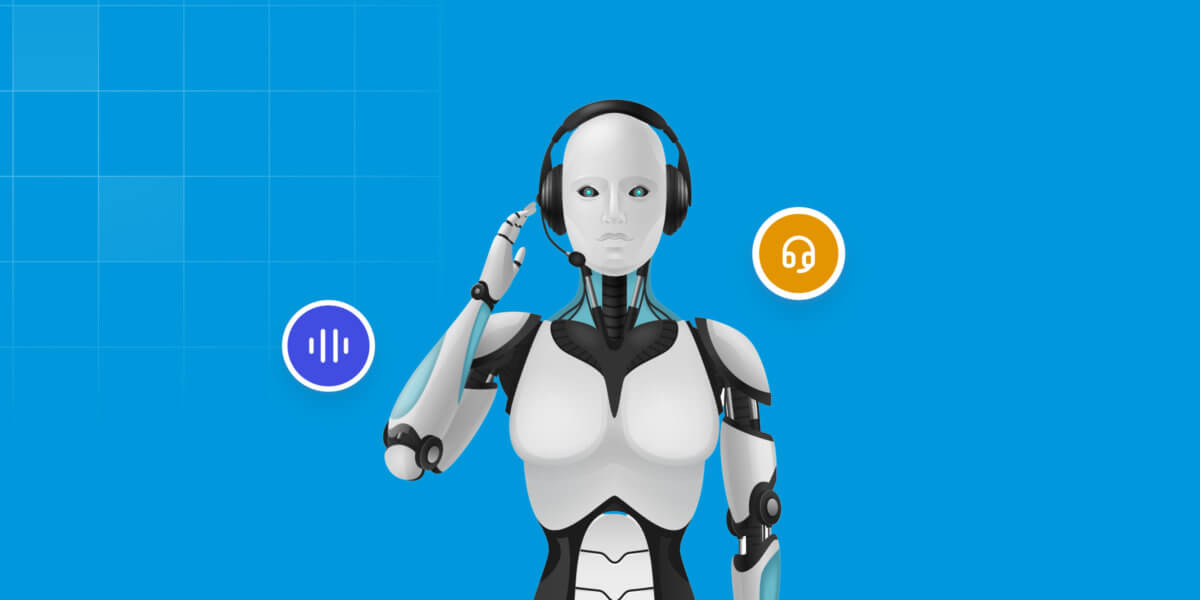15 Live Chat Features for Quick and Personalised Customer Support
- July 15th, 2025 / 5 Mins read
-
Harshitha Raj

15 Live Chat Features for Quick and Personalised Customer Support
- July 15th, 2025 / 5 Mins read
-
Harshitha Raj
15 live chat features
Empower your support agents with live chat that help them deliver the kind of great support experiences your customers expect from you.
I am sure you don’t like to be on hold for several minutes while trying to reach customer support. Or wait for days after sending an email to the help team. Neither do your customers. Also, why should they, when instead, they can get real-time help and support over live chat?
The live chat feature in apps has raised the bar of customer support significantly in recent years. For more than a decade, businesses have been using online chat features to ensure a quick and personalised customer support experience.
This has replaced the traditional ways of calling a helpline or sending an email to address any concerns. This feature saves time and money while letting customers multitask during the exchange. Because of its massive benefits, most businesses are moving towards live chat on websites or apps.
Just ensure that the live chat platform has features that make agents’ lives easier and elevate the quality of customer service.
Why Live Chat Support Is Important?
Imagine this: you’re shopping online, trying to decide between two tech gadgets. You have a quick question, but the only option is a contact form or a support number with a long hold time. Frustrating, right?
Now picture a small chat icon in the corner—someone is available instantly to help you decide. That’s the difference live chat makes.
Live chat support is no longer just a nice-to-have; it’s a business-critical channel that meets customers right where they are—on your website, mid-decision, and often moments away from either converting or dropping off.
Here’s why live chat matters:
1. It’s the most satisfying support channel
Live chat leads the pack in customer satisfaction, with an average 83.1% satisfaction rate, higher than phone (44%) or email (61%) support. Why?
Because it offers fast, accessible help without the common irritants of waiting in a call queue or refreshing your inbox for a reply.
Example: A customer trying to change a flight ticket gets their issue resolved in 3 minutes through chat, instead of sitting through IVR prompts and hold music. This creates a sense of efficiency and relief, essential feelings during stressful service moments.
2. Speed wins business
The average live chat response time is just 15 seconds, compared to hours for email. This speed is crucial during key customer decision-making moments, like checking return policies or resolving payment errors at checkout.
Fast response times increase the likelihood of a customer staying engaged and following through. In a market where attention spans are short, that 15-second window can be the difference between a sale and a bounce.
3. It boosts conversions
Live chat isn’t just about answering questions—it directly impacts revenue. According to Invesp, websites with live chat see up to 20% higher conversion rates. Chat users are 2.8x more likely to convert.
Consider an online shopper unsure about size or stock availability. Instead of abandoning their cart, they get clarity via chat and complete the purchase. That single interaction turns hesitation into a transaction.
4. Customers prefer it
73% of customers prefer live chat over phone or email because it fits seamlessly into their digital journey. Unlike phone calls, there’s no need to stop what they’re doing. Unlike emails, there’s no uncertainty around when (or if) they’ll hear back.
It gives them control over the interaction—start it, pause it, return to it—on their own terms.
5. It builds loyalty
Returning customers are good for business—and live chat helps keep them coming back. 63% of users who chat with a business are more likely to return. Why?
Because the interaction is often helpful, human, and memorable.
For instance, a returning customer facing login issues is assisted instantly, making them feel valued. This reliability builds trust, and trust builds repeat business.
6. It reduces cart abandonment
Cart abandonment sits at an industry average of 70%. Live chat helps lower that by offering immediate help during friction points—confusing shipping policies, unclear pricing, or technical glitches.
Proactive chat prompts like “Need help choosing the right size?” or “Having trouble checking out?” at the right time can recover lost revenue and turn drop-offs into conversions.
7. It increases basket size
Live chat helps customers make informed decisions—and confident customers tend to spend more. Users who interact via chat tend to spend 60% more per transaction.
Think of a customer browsing a skincare brand. With chat support, they’re guided to bundle products for a routine—cleansing, moisturising, SPF. Without the chat, they might’ve bought just one item.
8. It’s evolving with AI
Live chat is no longer just about humans behind the screen. AI-powered chatbots now enable 24/7 coverage, ensuring businesses don’t miss out on late-night queries or high-volume spikes.
These bots handle FAQs, routing, and even suggest solutions based on past behaviour. They reduce strain on human agents while maintaining the quality and speed of service—ideal for scaling operations without sacrificing experience.
15 Live Chat Features You Should Look for
Live chat has become a standard support channel—not just for convenience, but because it helps businesses reduce resolution time, manage high volumes efficiently, and offer customers help without making them wait in queues or switch channels.
But not all live chat solutions are built the same. A basic widget that lets agents reply to queries in real time may get the job done—but it’s rarely enough for scaling support. As your business grows and customer expectations shift, you’ll need tools that go beyond one-on-one replies.
That’s where live chat features come in. Think of them as building blocks—each one designed to solve a specific problem, improve agent workflows, or enhance the customer experience.
Whether you’re evaluating a new solution or want to improve how your team handles chat today, here are 15 essential live chat features worth considering, along with how they can help your team do more with less.
1. Chat Routing
Ensures that conversations are automatically assigned to the right agent or department. This avoids unnecessary handovers and reduces wait times—useful when you have specialised teams (e.g. billing, tech support) handling different queries.
2. Pre-Chat Forms
Collects customer information (name, query type, order ID) before the chat starts. This gives agents context upfront, leading to quicker resolutions and a smoother handover in case the chat is reassigned.
3. Agent Notes and Tags
Allows agents to tag conversations and add internal notes. This helps with tracking common issues, streamlining follow-ups, and assisting future agents who might revisit the chat.
4. Chat Transcripts
Gives customers and agents access to previous conversations. It helps maintain continuity in case the same issue reoccurs or escalates, and is particularly useful in regulated industries where audit trails are required.
5. Canned Responses
Lets agents use saved replies for frequently asked questions—like return policies or login help. It reduces typing effort, improves consistency, and speeds up average response time.
6. Multilingual Support
Enables real-time translation or language-specific routing. This helps businesses serve a wider audience, especially in regions where customers expect native-language support.
7. Chat Ratings and Feedback
Lets customers rate their chat experience and leave comments. It helps identify gaps in service quality and gives your team direct input for coaching and improvement.
8. Typing Indicators and Read Receipts
Shows when an agent or customer is typing and whether messages have been read. This reduces uncertainty, helping manage expectations during longer replies or escalations.
9. Offline Messaging
Captures messages when agents are unavailable, allowing customers to leave their queries for follow-up. Useful for after-hours support, especially for businesses with limited agent coverage.
10. Bot-to-Agent Handoff
Allows a chatbot to handle routine queries and pass on complex ones to a live agent—along with the full conversation history. This ensures continuity and frees up agents for high-value interactions.
11. File Sharing and Screenshots
Lets users upload files, images, or screenshots directly in the chat window. It’s essential for troubleshooting, such as sharing payment receipts or error messages.
12. Conversation History and Context
Pulls customer data from your CRM or past interactions into the chat. Agents can personalise responses without asking repeat questions—helpful for loyalty-building and account-based service.
13. Real-Time Queue Management
Shows the number of waiting customers, average wait times, and agent availability. Managers can allocate resources accordingly and reduce customer drop-off.
14. Analytics and Reporting
Tracks chat metrics like resolution time, agent productivity, and customer satisfaction. These insights help teams optimise performance and back decisions with data.
15. Mobile-Friendly Interface
Ensures both customers and agents can use live chat seamlessly on mobile devices. This is particularly relevant for sectors like e-commerce, logistics, and healthcare, where queries often come on the go.
Add Live Chat Support Now
Compare the features of different live chat solutions to identify the one that best meets your needs. Look for solutions that offer essential features such as real-time chat, multi-channel support, and analytics. A comprehensive feature set ensures that your live chat solution can effectively address customer needs and drive satisfaction.
Flexibility and scalability are crucial considerations when choosing a live chat solution. Ensure that the solution can adapt to your evolving business needs and support growth. A scalable solution allows for seamless expansion, accommodating increased customer interactions without compromising service quality.
Implementing a live chat solution with these essential features can transform your customer service and engagement strategies. By offering real-time support, personalized interactions, and valuable insights, you can improve customer satisfaction and drive business growth. As you explore different live chat tools, prioritize those that align with your business objectives and offer the flexibility to adapt to your evolving needs.
At Verloop.io, live chat is more than just a communication tool. It’s a part of a larger conversational support platform—built with smart routing, AI-powered assistants, canned replies, quality monitoring, and multilingual support that scales with your business. Whether you’re handling a few dozen chats a day or thousands, Verloop.io helps your team stay efficient and your customers stay satisfied.
If you’re rethinking how your team handles support, it might be time to see what modern live chat can really do.

FAQs
1. What is a live chat feature, and why does it matter?
Live chat features are built-in tools within a chat platform that help streamline conversations, improve agent productivity, and enhance the customer experience. They matter because they determine how efficiently your team can manage incoming queries and how personalised the support feels to your customers.
2. How do live chat and chatbots work together?
Live chat and chatbots often work hand-in-hand. Chatbots handle FAQs, collect information, and manage routine queries. When the query becomes complex, the bot passes it to a live agent—along with full context—so there’s no disruption for the customer.
3. Can live chat help reduce support costs?
Yes. With features like canned responses, smart routing, and automation, teams can handle more conversations with fewer agents. This leads to lower operational costs without compromising on service quality.
4. What industries benefit most from live chat support?
E-commerce, BFSI, travel, edtech, and healthcare often see strong results with live chat, especially when customer queries are time-sensitive or need contextual assistance. But any business with digital customer touchpoints can benefit from implementing live chat.
5. Is live chat secure for handling sensitive information?
Most enterprise-grade live chat platforms, including Verloop.io, offer end-to-end encryption, role-based access, and audit trails to ensure secure conversations. However, businesses should still avoid sharing highly sensitive information like full card numbers or passwords over chat.
6. How do I measure the success of a live chat setup?
Key metrics include first response time, resolution time, CSAT (customer satisfaction) score, number of chats handled, and agent occupancy. A good platform should provide reporting tools that help you track and improve these KPIs regularly.






